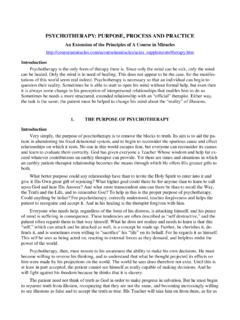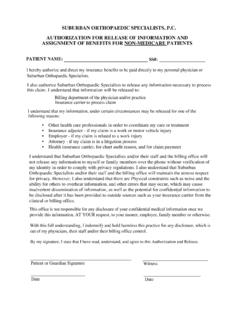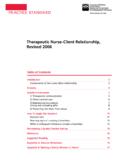Transcription of Position Statement on The Practice of Dermatology ...
1 Position Statement on The Practice of Dermatology : protecting and preserving Patient safety and quality Care (Approved by the Board of Directors: May 22, 2010; Revised August 18, 2012; Revised March 2, 2013; Revised April 27, 2013; Revised August 3, 2013; Revised August 9, 2014; Revised May 21, 2016) The guiding principle for all dermatologists is to Practice ethical medicine with the highest possible standards to ensure that the best interests and welfare of each patient are guaranteed. The Practice of Dermatology (Cutaneous Medicine) The Practice of Dermatology includes, but is not limited to, diagnosis, treatment, or correction of human conditions, ailments, diseases, injuries, or infirmities of the skin, hair, nails and mucous membranes, by any medical, surgical, pathologic or aesthetic means, medications, methods, devices, or instruments.
2 These conditions may be primary cutaneous ailments or part of a systemic disease. The Practice of Dermatology includes, but is not limited to, performing any medical, surgical or aesthetic act or procedure that can alter or cause biologic change or damage to the skin and subcutaneous Any procedure using any approved device that can alter or cause biologic change or damage, should be performed only by an appropriately trained physician or non- physician under the direct, on-site supervision of an appropriately trained physician. The Practice of Dermatology , in accordance with this Position Statement , can occur in varied settings. The highest level of standards to Practice Dermatology should be applied across all settings. It is important that any Practice expend appropriate efforts to understand and use proper Current Procedural Terminology (CPT) coding for the services it provides and that its coding is verified by an authoritative entity such as the local Medicare carrier or relevant private payer.
3 1 Procedures which can alter or cause biologic change or damage the skin and subcutaneous tissue include but are not limited to: the use of all lasers, scalpel, light sources, microwave energy, electrical impulses, chemical application, particle sanding, the injection or insertion of foreign or natural substances, or soft tissue augmentation. The Practice of Dermatology : protecting and preserving Patient safety and quality Care Page 2 of 3 Who is a Board-Certified Dermatologist? A board-certified dermatologist is a licensed medical doctor and the only residency- trained physician specialist fully educated in the science and art of cutaneous medicine and surgery who has received certification from the American Board of Dermatology , the Royal College of Physicians and Surgeons of Canada, or the American Osteopathic Board of Dermatology .
4 Board-certified dermatologists treat the medical, surgical, pathologic and aesthetic conditions of the skin, hair, nails, and mucous membranes. A dermatologist has extensive knowledge and expertise in cutaneous medicine, surgery, and pathology. The delivery of dermatologic care by a non-dermatologist or unsupervised non-physician personnel is limited and may result in a higher incidence of adverse events, complications, or suboptimal results. Training & Education A dermatologist is ultimately responsible for the care and safety of patients in his or her Practice , and is responsible for the training and continuing education of all providers under his or her supervision. Under the direction of a board-certified dermatologist, the Practice of Dermatology benefits from a collaborative care team approach and may include other providers practicing in a dermatologic setting, including but not limited to: non-physician clinicians, such as licensed physician assistants and nurse practitioners; allied health professionals; licensed personnel; and other personnel.
5 The board-certified dermatologist retains ultimate responsibility for patient care and tasks delegated to care team members must be within the scope of Practice of the board-certified dermatologist. The dermatologist also remains responsible for ensuring that all delegated activities are within the scope of each care team member s training and level of experience. Training of all personnel should be commensurate with their licensure and/or experience and the degree of difficulty or complexity of the medical care, diagnoses, treatments, procedures/techniques, services or tasks being delegated to them by a dermatologist. Optimum Practice standards require that a dermatologist maintain written documentation on the training and education received by all personnel to which medical care, procedures/techniques, services or tasks are delegated.
6 Delegation & Supervision The optimum degree of dermatologic care is delivered when a board-certified dermatologist, as defined here, provides direct, on-site supervision to all non- dermatologist personnel. Each Practice should maintain written procedures regarding appropriate delegation and supervision protocols for all personnel within the Practice , including parameters for when it is necessary for the patient to be presented to the dermatologist and when the medical records of patients should be reviewed. When practicing in a dermatological setting, non-dermatologist physicians and non-physician clinicians, such as nurse practitioners and physicians assistants, should be directly supervised by a board-certified dermatologist, commensurate with the level of supervision defined by the state board of medical examiners or other appropriate state board/agency of the state in which they Practice and taking into consideration the training and degree of experience of the non-physician The Practice of Dermatology : protecting and preserving Patient safety and quality Care Page 3 of 3 clinician.
7 The efficient utilization of a non-physician clinician may, at times, involve off-site supervision. The supervising dermatologist or a designated alternate dermatologist must be available in person or by electronic communication at all times when the non-physician clinician is caring for patients . For those instances when a dermatologist is not available on site, there should be written protocols outlining how a patient is to be seen by a non-physician clinician and under what circumstances these patients should be presented to the supervising dermatologist, who is always available either in person or by electronic means. Licensed allied health professionals, including but not limited to registered nurses and licensed practical nurses, when practicing in a dermatological setting, should only provide care after a patient receives an initial evaluation, diagnosis, and treatment plan from a dermatologist.
8 Allied health professionals should be directly supervised by an on-site dermatologist when providing care or performing specific procedures/techniques. Aestheticians, cosmetologists, and electrologists are not legally permitted to engage in the Practice of medicine, including the performance of medical aesthetic services. Medical aesthetic services should only be delegated to an aesthetician, cosmetologist or electrologist when competency can be established based on theoretical and didactic education, and clinical training and experience. These licensed professionals should only perform delegated medical aesthetic services under the direct, on-site supervision of a board-certified dermatologist. Licensed and unlicensed medical assistants should only assist a board-certified dermatologist with basic, specific tasks under the dermatologist s direct, personal supervision.
9 The regulatory language governing physician delegation of health care services to non- physician personnel varies greatly from state to state. However, the common theme in state regulations is that physicians may only delegate procedures/techniques or tasks to those individuals that are competent and qualified, by their training, experience, or licensure. In addition, delegated tasks or procedures/techniques must be within the delegating dermatologist s area of expertise. No care, procedure/technique, service or task should be delegated to personnel who do not possess the proper training and education to perform such care, procedure/technique, service or task. This Position Statement is intended to offer physicians guiding principles regarding the Practice of Dermatology and delegation of these tasks and procedures.
10 This Position Statement is not intended to establish a legal standard of care. Physicians should use their personal and professional judgment in interpreting these guidelines and applying them to the particular circumstances of their individual Practice arrangements.

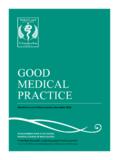
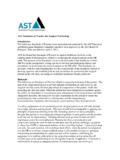
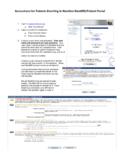
![British Anaesthetic and Recovery Nurses Association [BARNA]](/cache/preview/3/3/6/4/d/c/d/4/thumb-3364dcd4e351674f719a97a46568aade.jpg)
